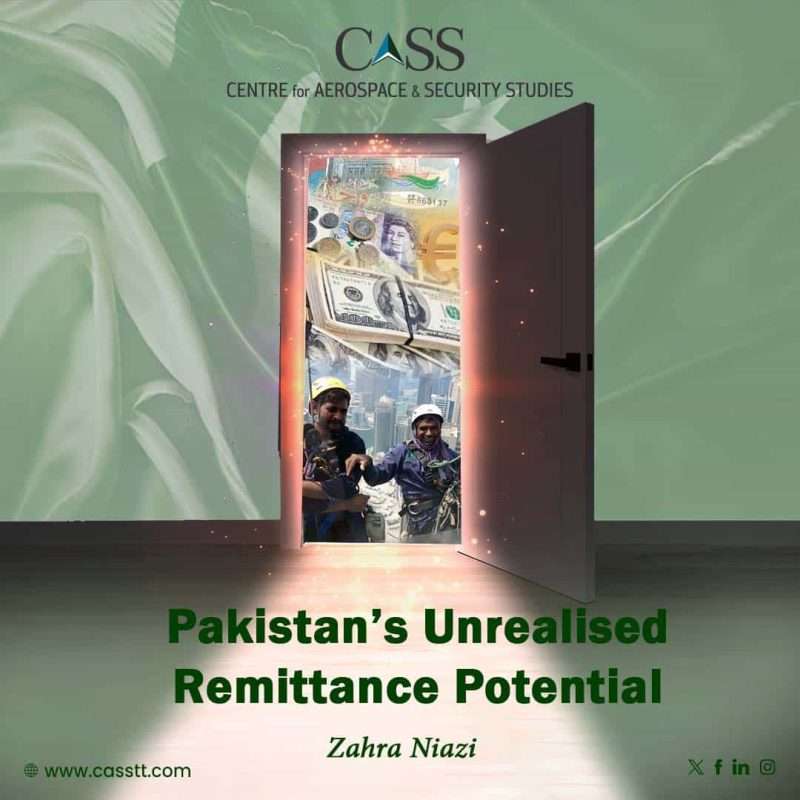The tide of outward migration from Pakistan surged considerably over the past two years (2022 and 2023), with several millions opting to emigrate with the aim of securing better prospects overseas. For instance, the number of skilled, highly skilled, and highly qualified worker migrants from Pakistan alone increased to 0.77 million, compared to 0.26 million in 2020 and 2021 and 0.48 million during 2018 and 2019, the two years before the pandemic.
In principle, inward remittances to Pakistan should have grown, at least moderately, particularly from the second half of 2022 onwards, considering that outward migration started surging in early 2022. It turns out, however, that the trend of remittance inflows does not correlate as closely with the recent upturn in emigration from Pakistan.
For reference, inward remittances amounted to USD 15,265.7 million and USD 15,807.3 million in the first and second halves of 2021, respectively, and USD 15,471.6 million in the first half of 2022. However, in the second half of 2022, total remittances, rather than increasing, dropped to USD 14,417.6 million and, in the subsequent six months, to USD 12,915.2 million. Cumulative remittances rose slightly to USD 13,435.17 million in the second half of 2023 compared to its preceding six-month period but remained far below potential. The effective crackdown against hundi and hawala dealers and the convergence of interbank and open market rates helped increase cumulative remittances during this interval. However, they still remained markedly lower than during the same period in 2021, suggesting the potential role of diverse factors in addition to the role of the grey market and the rate differential in restraining the growth of remittances to Pakistan.
Given the vitality of remittances in sustaining Pakistan’s economy, we must take a closer look at why this may be the case.
The global economic slowdown, following the war in Ukraine in early 2022 and the international interest rate hike spree, has been cited as a factor pressurising Pakistan’s remittance receipts over the recent period. However, while the global economic conditions may have kept the remittances inflow below potential, they alone cannot account for this recent pattern of inflow.
Past occurrences have shown that the increase in unemployment is the primary pathway through which the contraction of economic activity affects remittance outflow from migrant-hosting countries. However, global unemployment rates improved in 2022 and 2023 and were, in fact, lower than the pre-pandemic level in 2019.
Additionally, a global cost of living crisis and the resultant hardships facing migrants may have kept the remittance outflows from migrant-hosting nations below potential, but overall, global inflation has been declining steadily since July 2022.
Taking domestic factors into account, then, may help provide a more crisp explanation. Abbas et al. (2017) explored the economic and non-economic determinants of remittance inflows to Pakistan, concluding that diverse domestic factors such as government debt, domestic inflation, political stability, or democracy impact remittances to Pakistan. For instance, high inflation levels and government debt create an unstable macroeconomic environment and discourage investment motives to remit. Data indicates that Pakistan’s average national Consumer Price Index (CPI) based inflation was higher during the second half of 2022 compared to its preceding six-month period, as well as the year 2021. It surged during the first half of 2023 and gradually decreased during the second half but remained higher year-on-year (YoY). Comparing this inflation pattern with the recent remittance inflow trend would demonstrate their opposing trajectories.
Likewise, Pakistan’s external debt soared at a pace of 41.7%, from PKR 44.4 trillion in March 2022 to PKR 62.9 trillion by the end of June 2023. During the first half of 2023, the external debt servicing pressure elevated significantly, bringing the country to the verge of a default. During this six-month period, there was also a notable decrease in remittance inflow, with cumulative remittances dropping to USD 12,915.2 million from USD 14,417.6 million in the preceding period.
Pakistan’s political landscape also became increasingly turbulent following the early part of the second quarter of 2022. Such non-economic factors, for example, political and democratic instability, may have also affected the inflow of inward remittances by breeding uncertainty and eroding political trust.
While none of the above offers conclusive evidence, it still provides reasons to presume that along with external factors, home-country factors creating an unfavourable environment for investment and reducing political trust may have been playing a significant, if not the only, role in restraining the growth of inward remittances over the recent period and may have been taking precedence over altruistic motives to remit money.
Domestic macroeconomic certainty and political stability, coupled with continued efforts to curb the role of the grey market and minimise interbank and open market rate differential, will be vital for boosting Pakistan’s much-needed remittance receipts. The recent trend is concerning since every dollar, pound, or dirham not remitted due to an unconducive home-country environment represents a lost opportunity.
Zahra Niazi is a Research Assistant at the Centre for Aerospace & Security Studies (CASS), Islamabad, Pakistan. She can be reached at [email protected].





